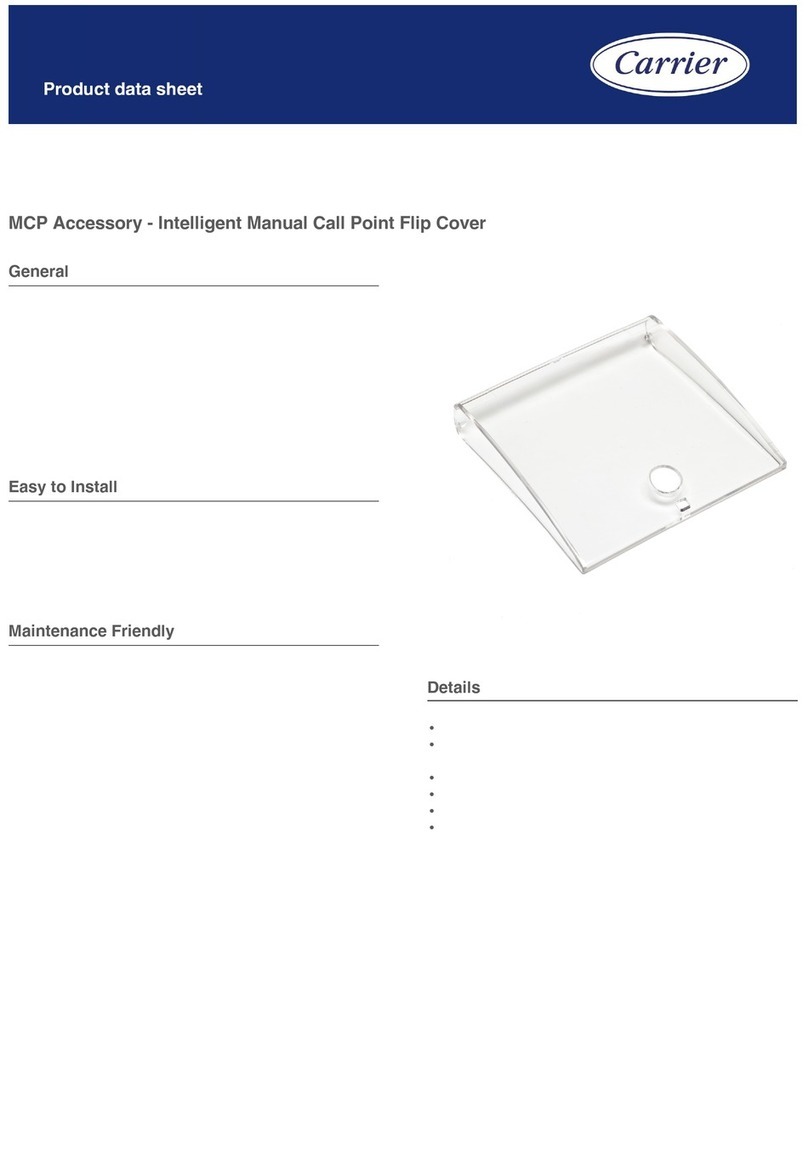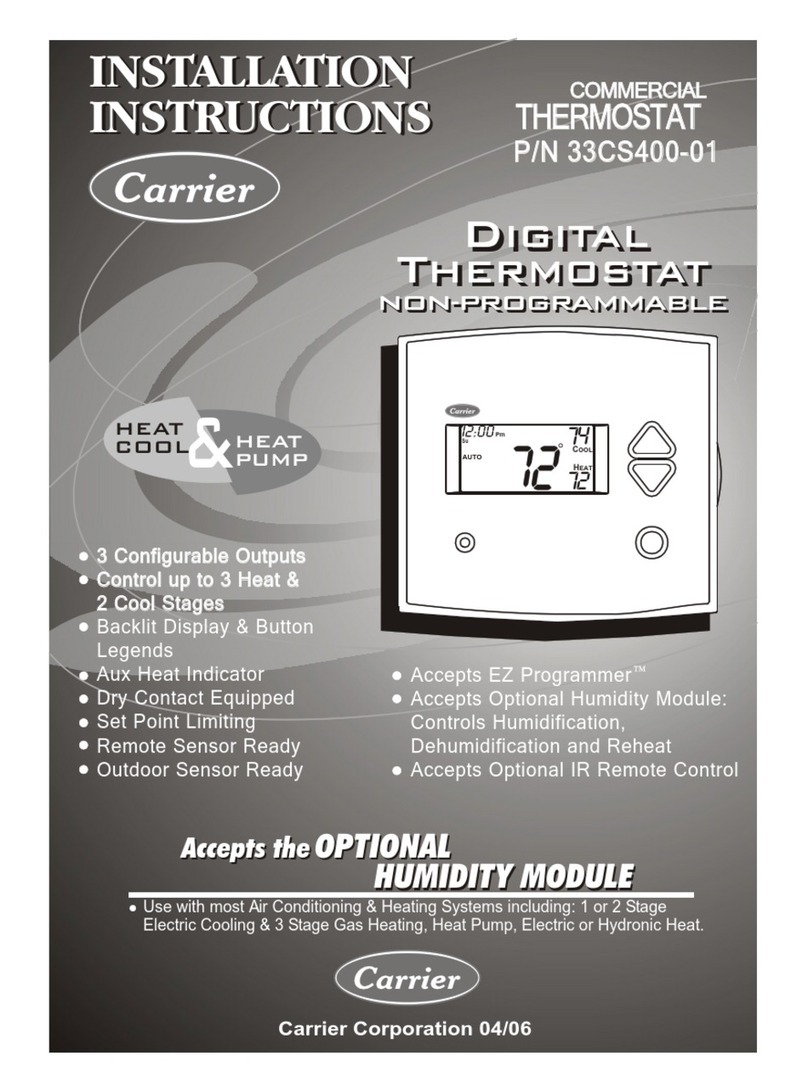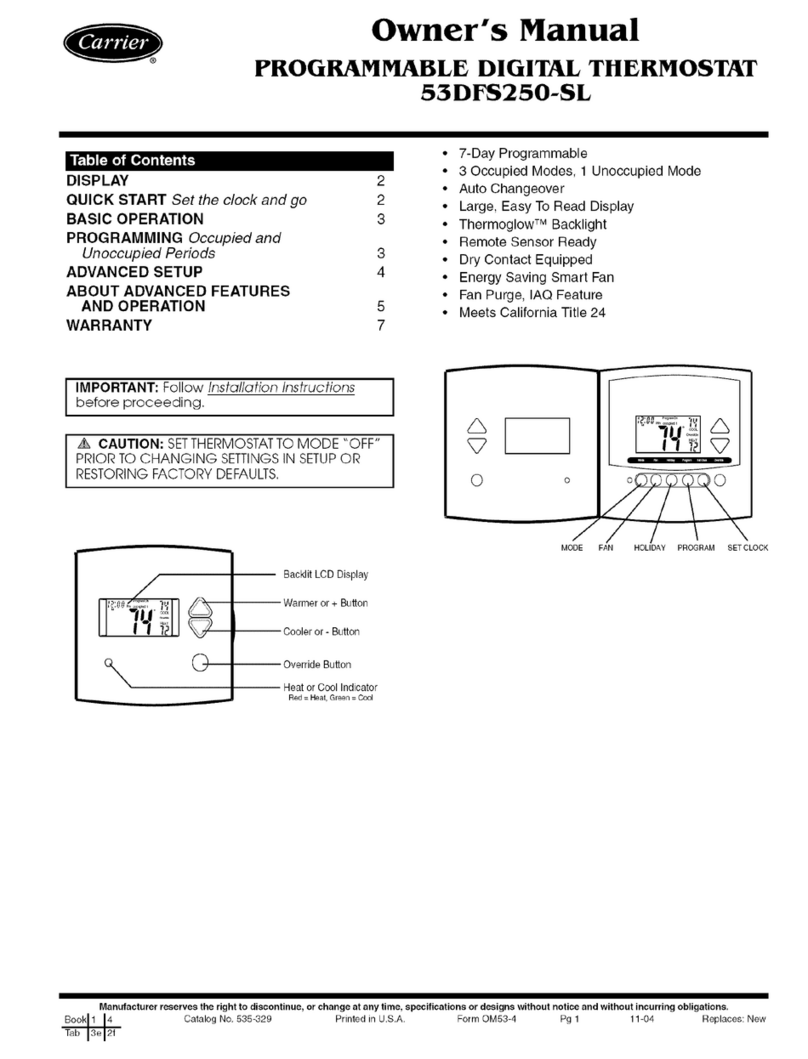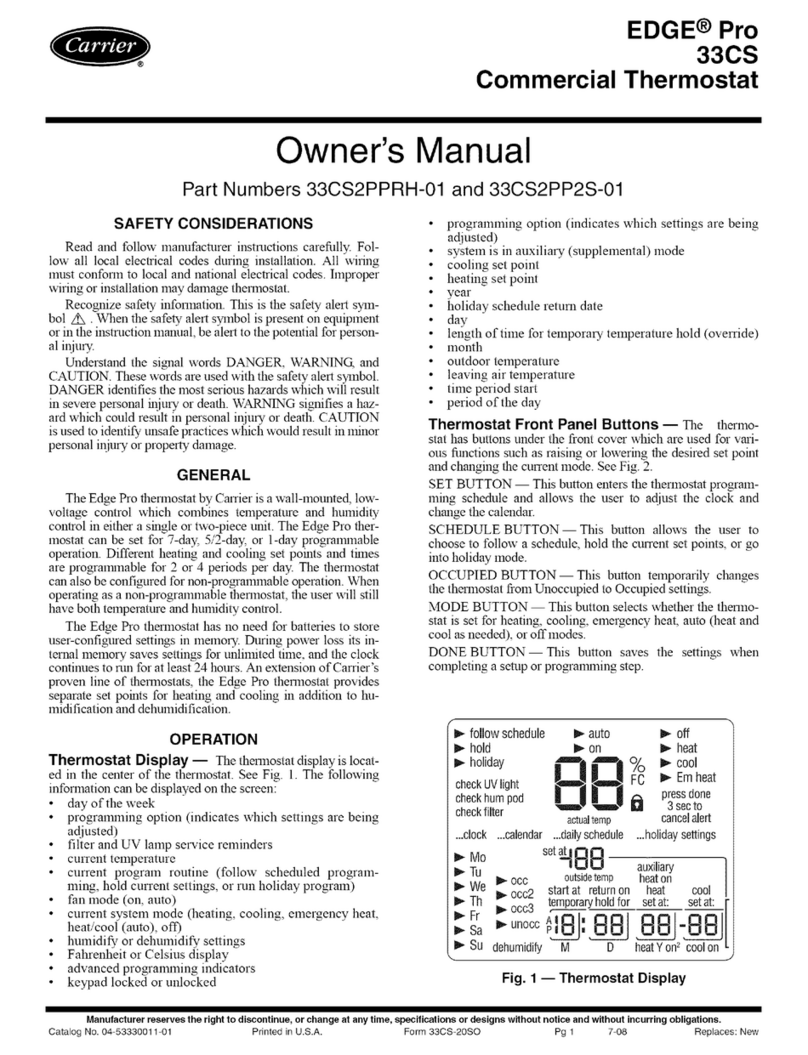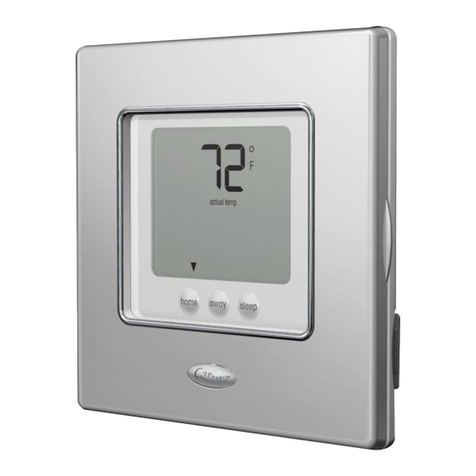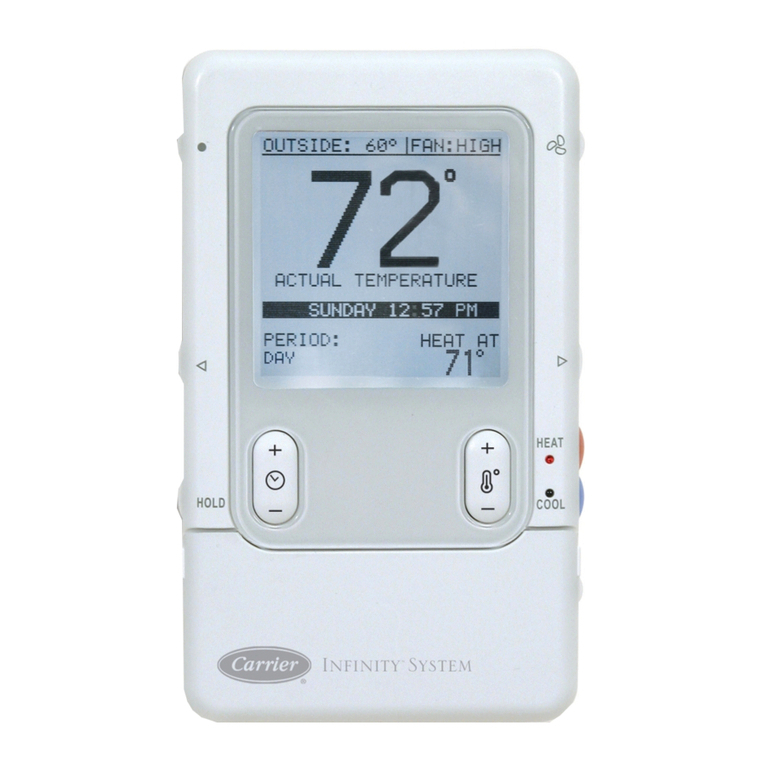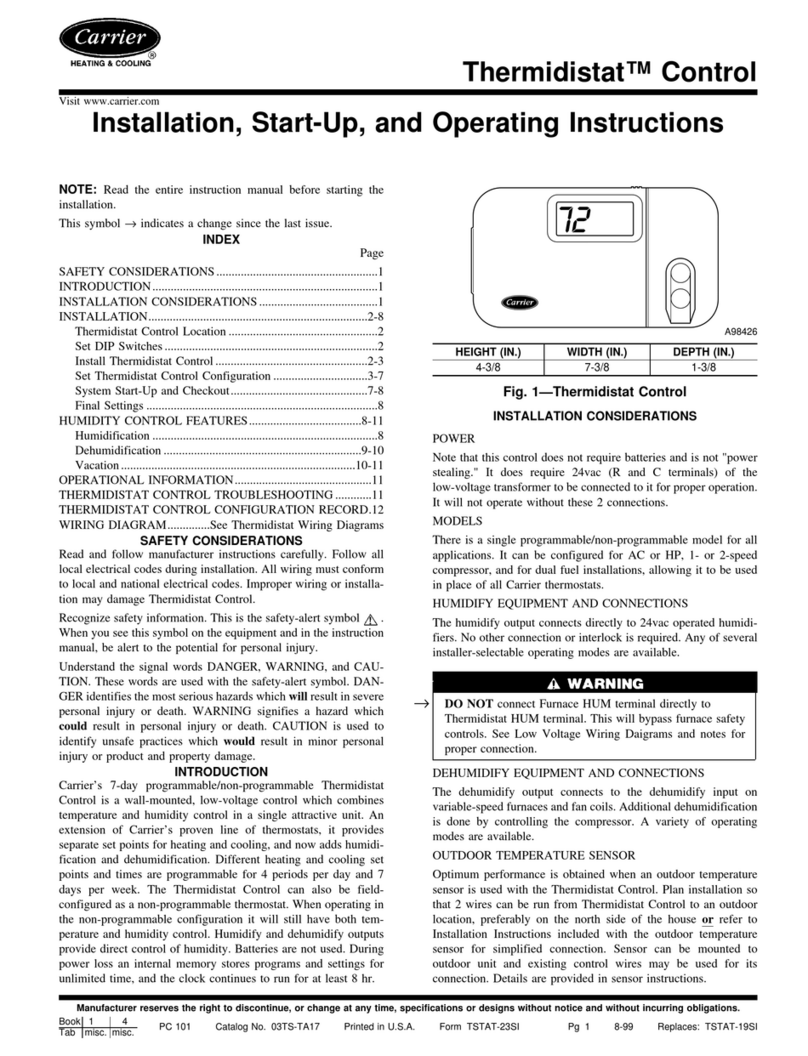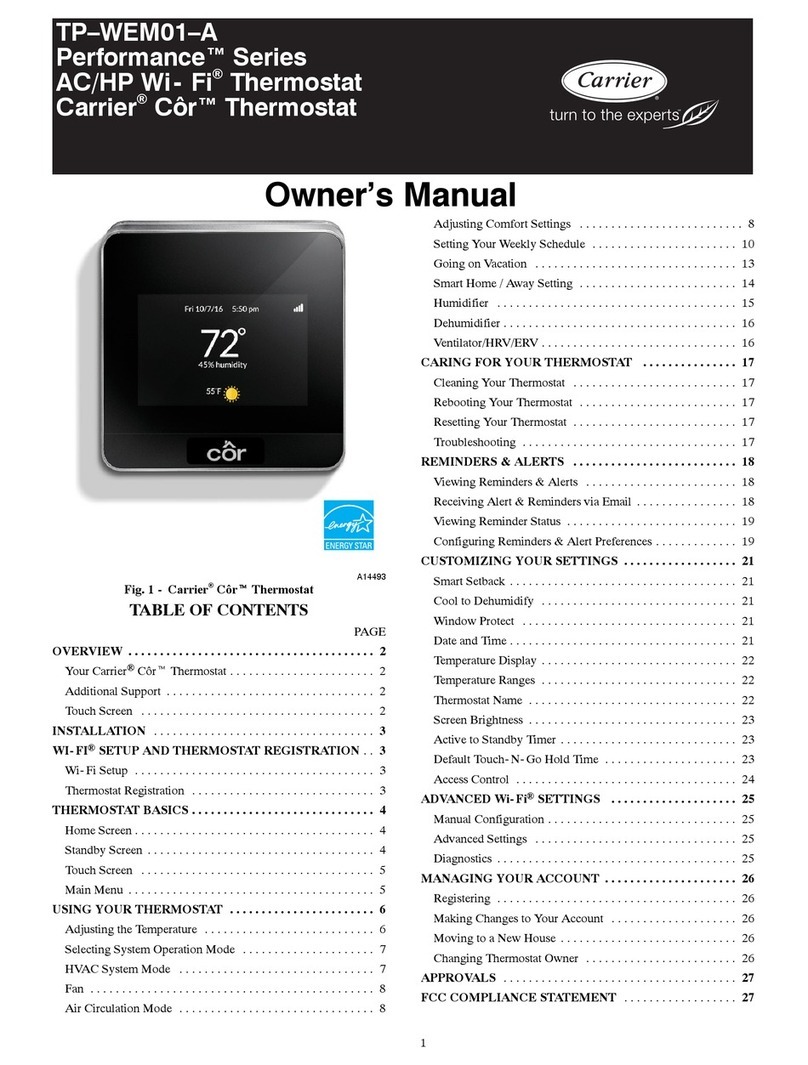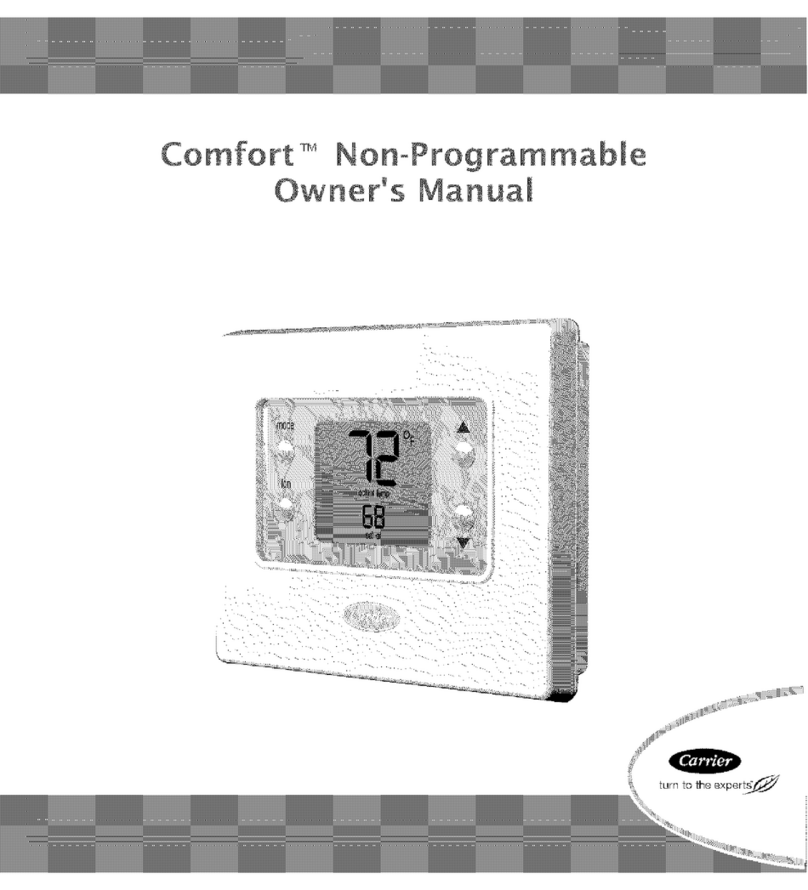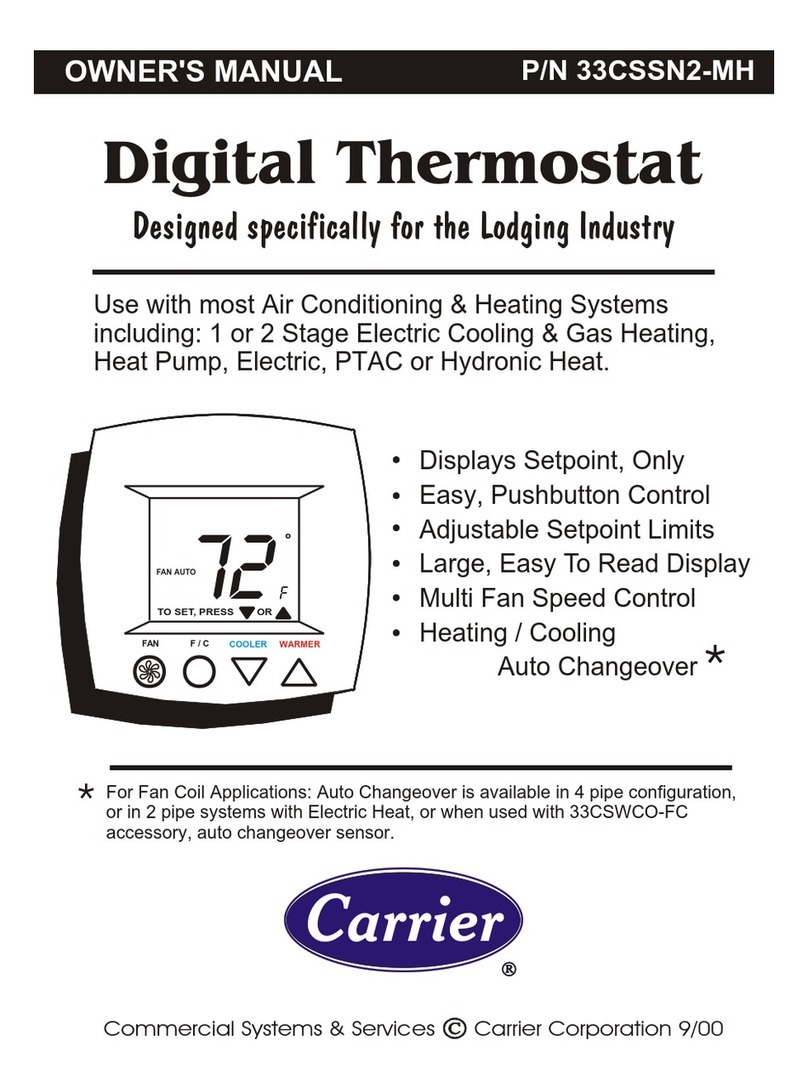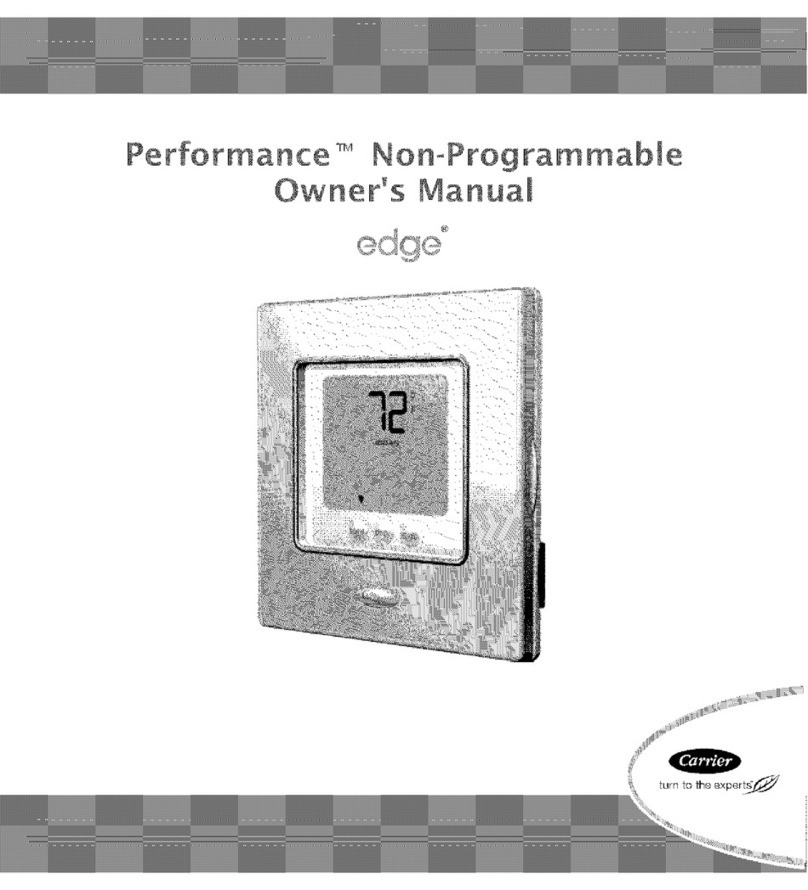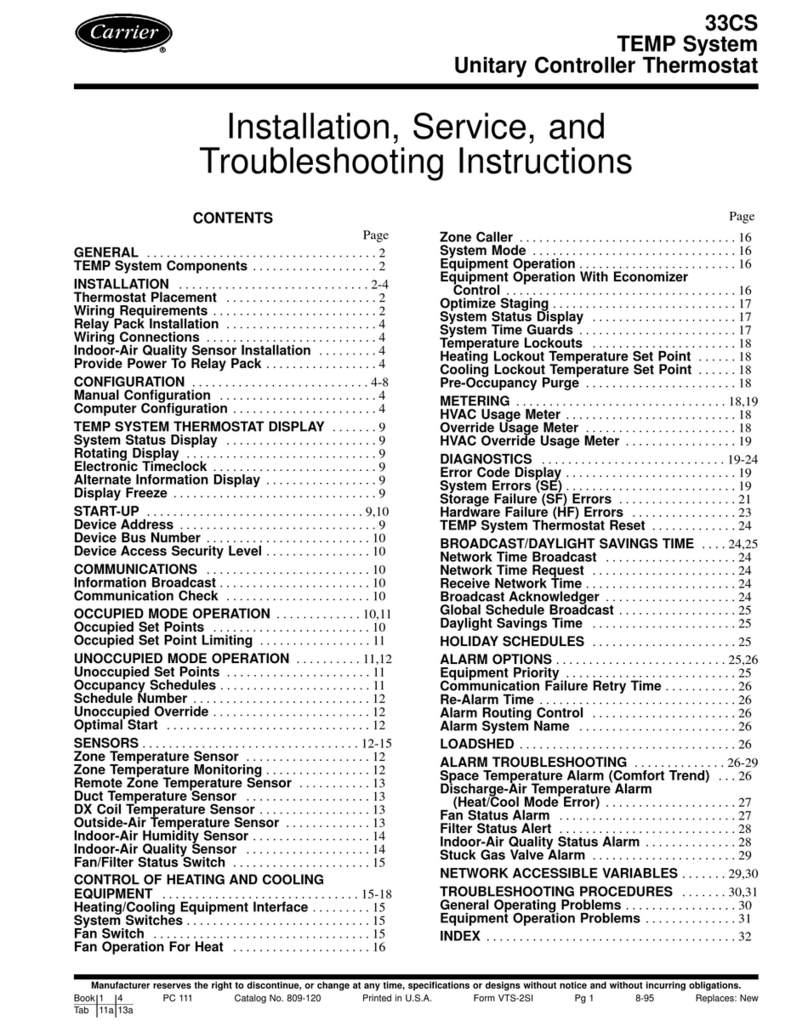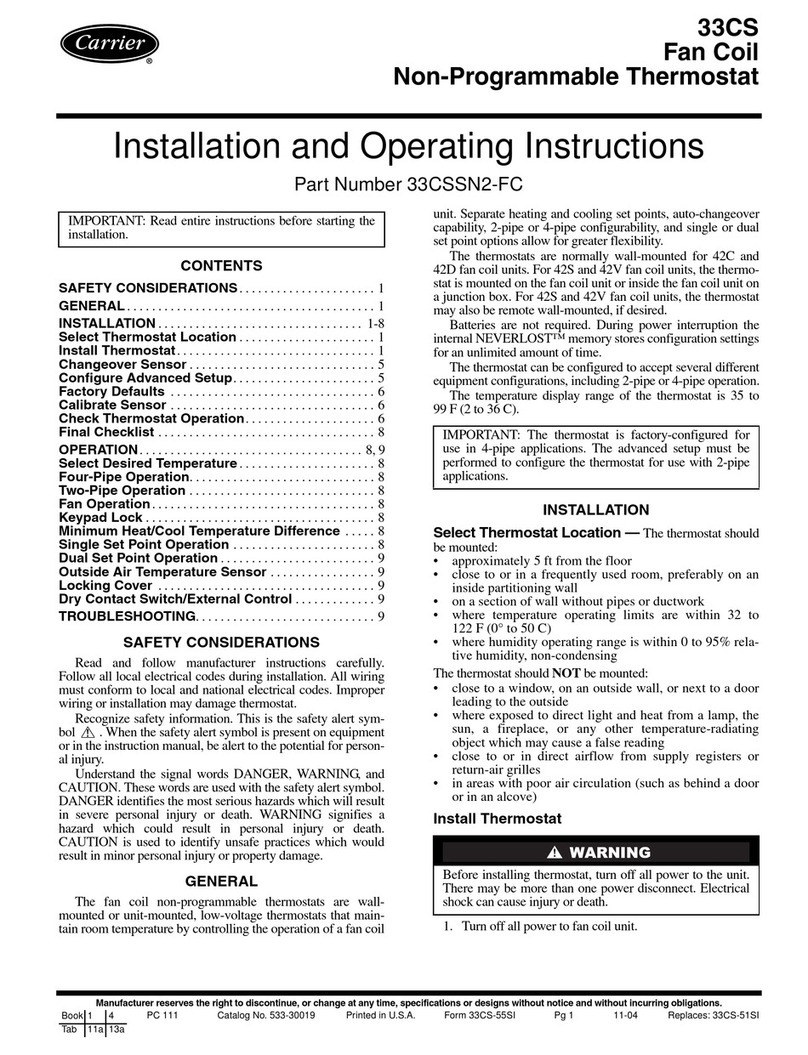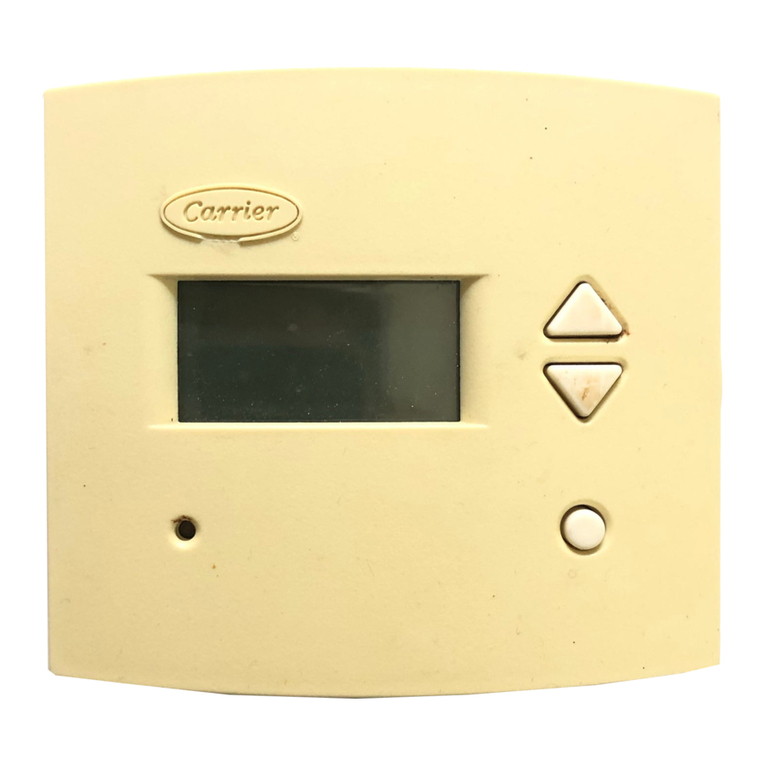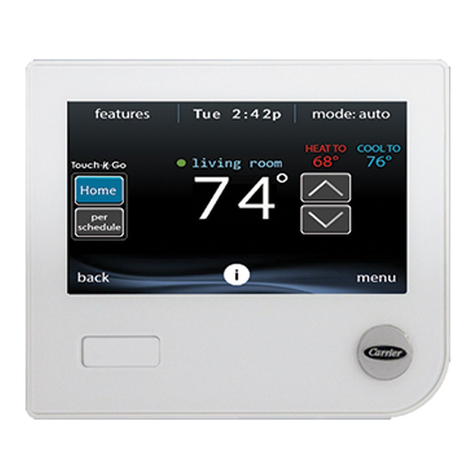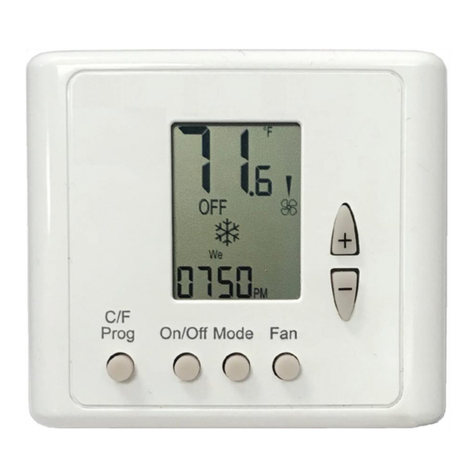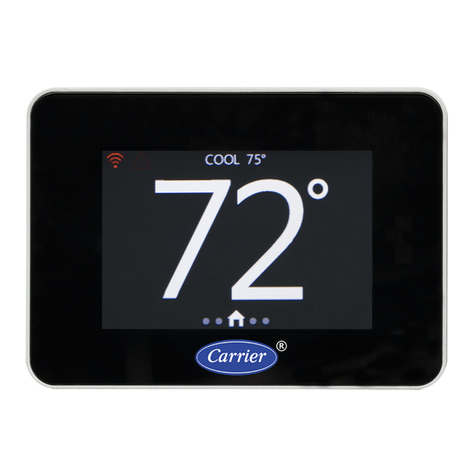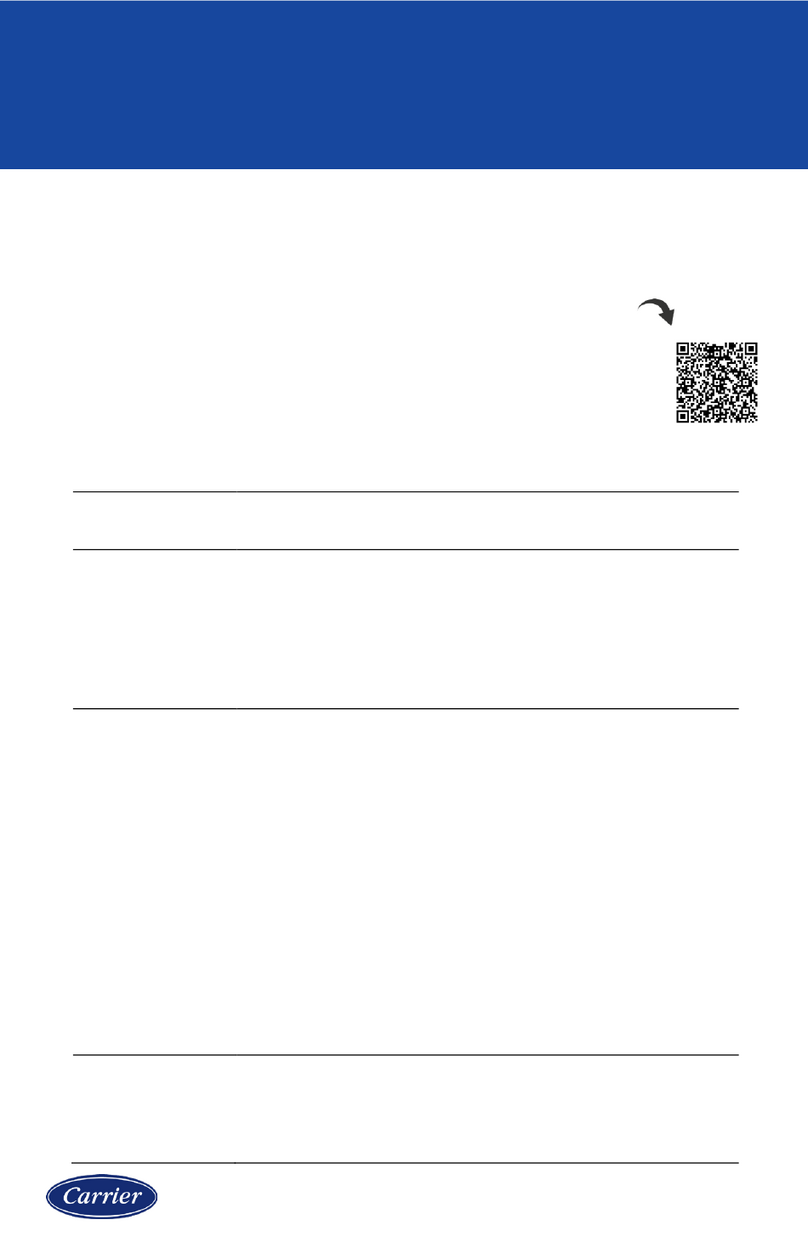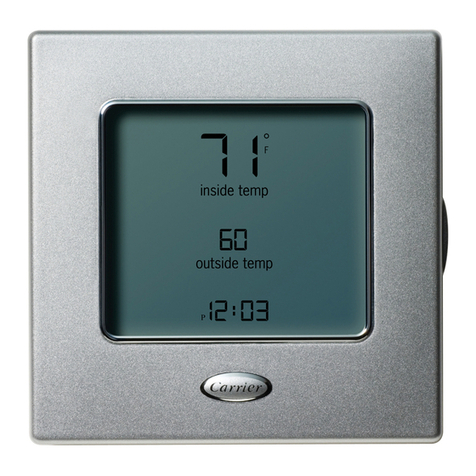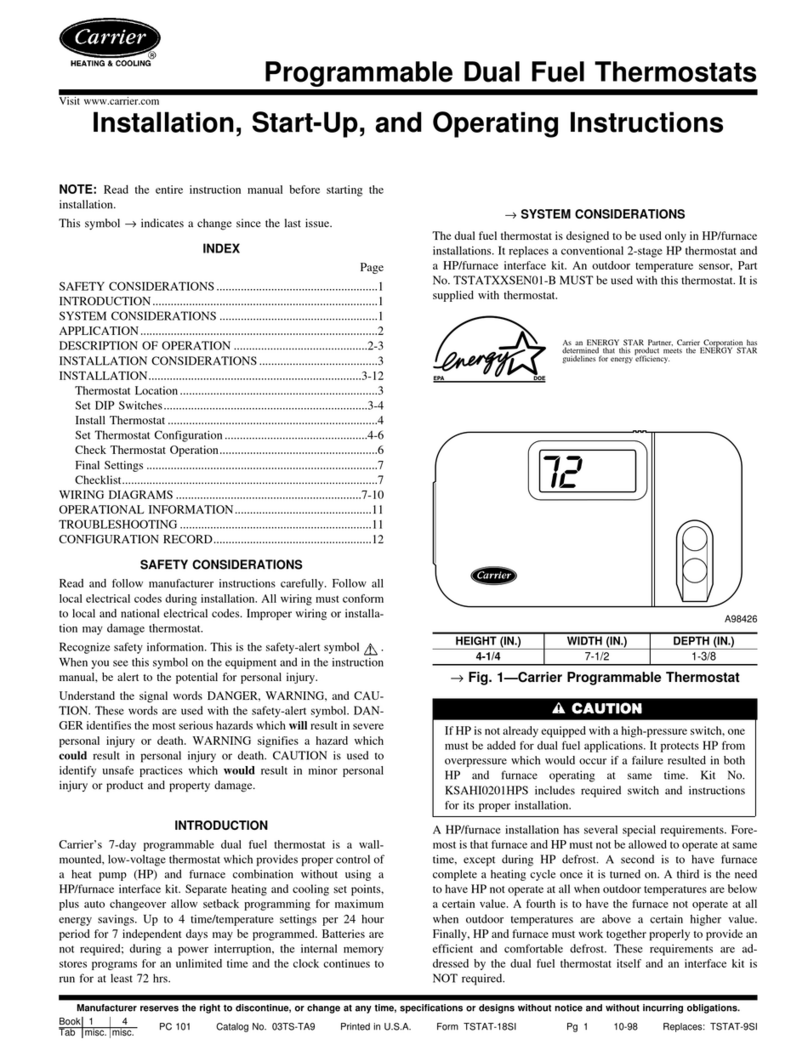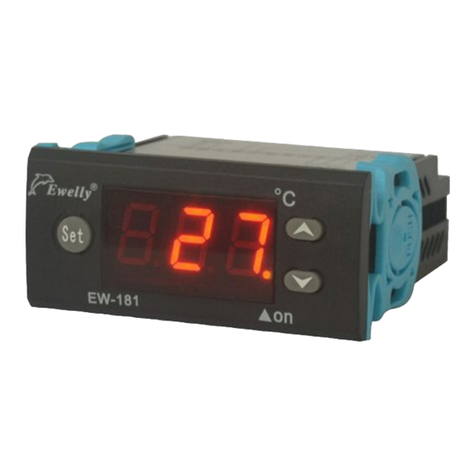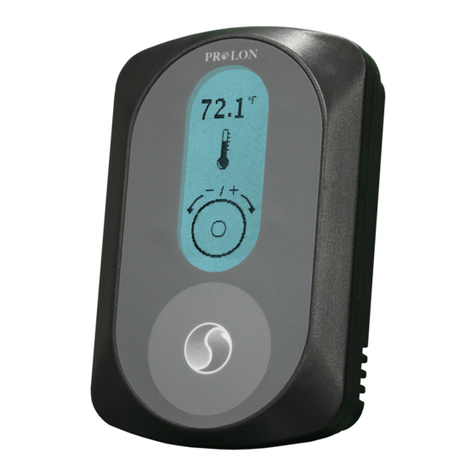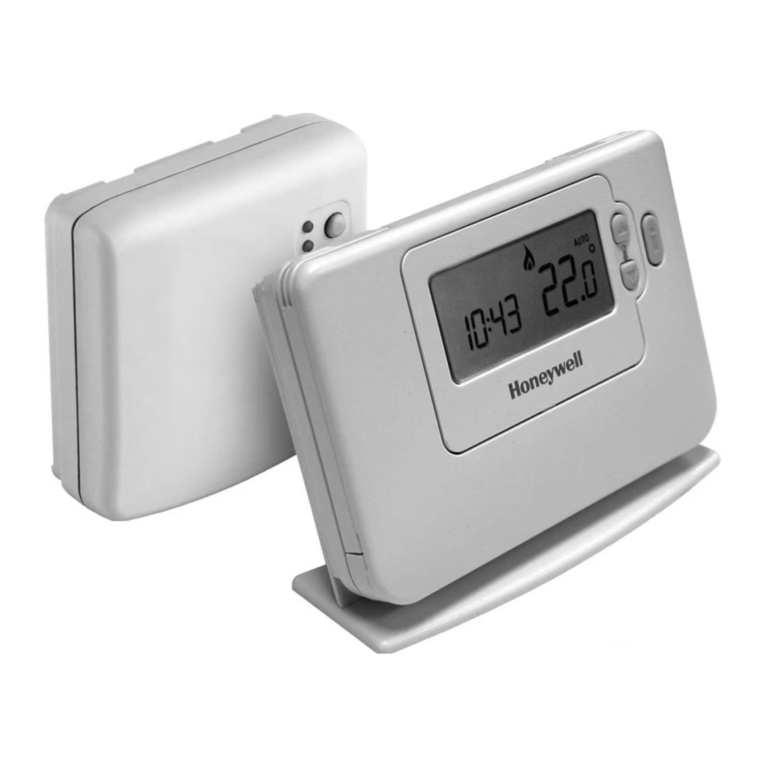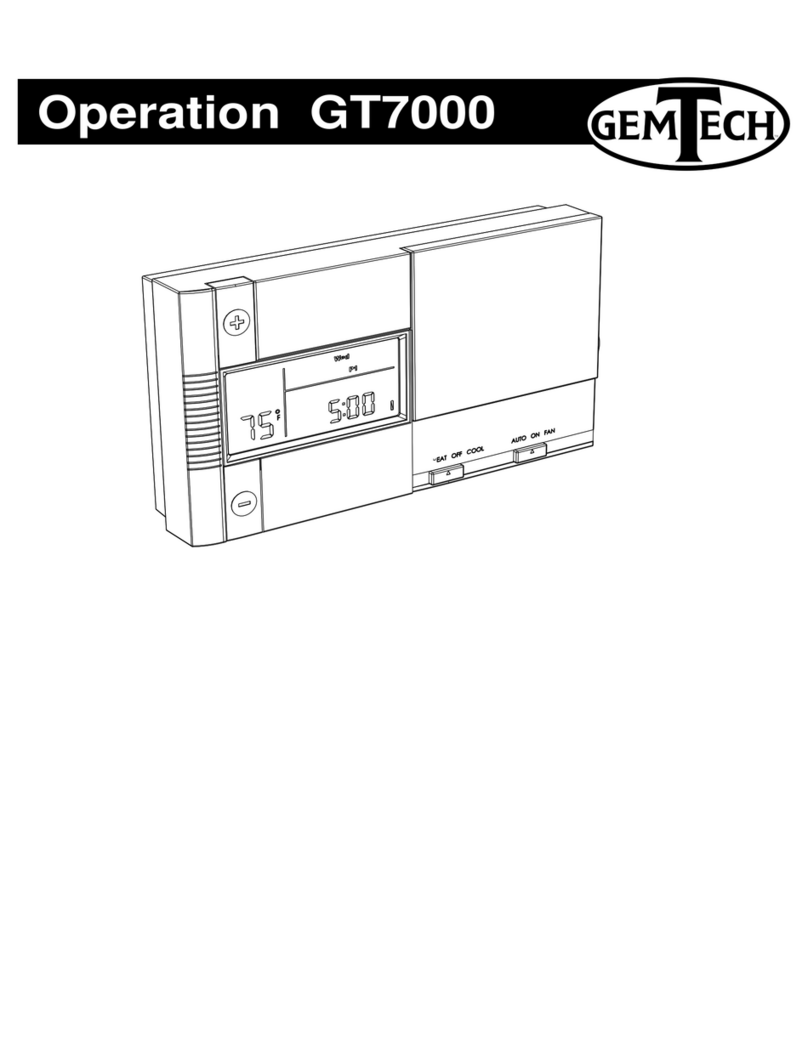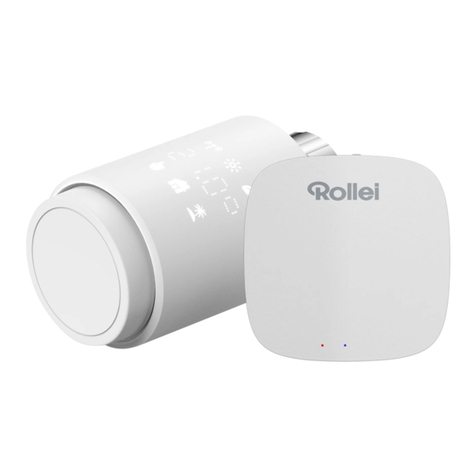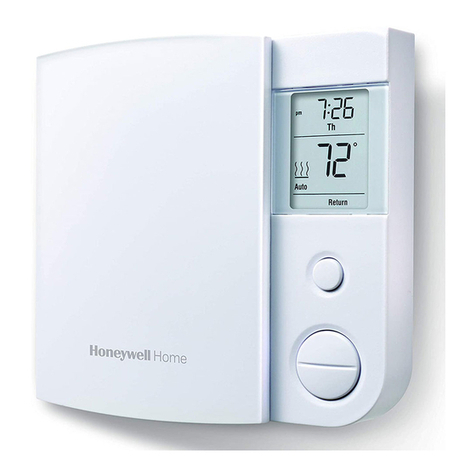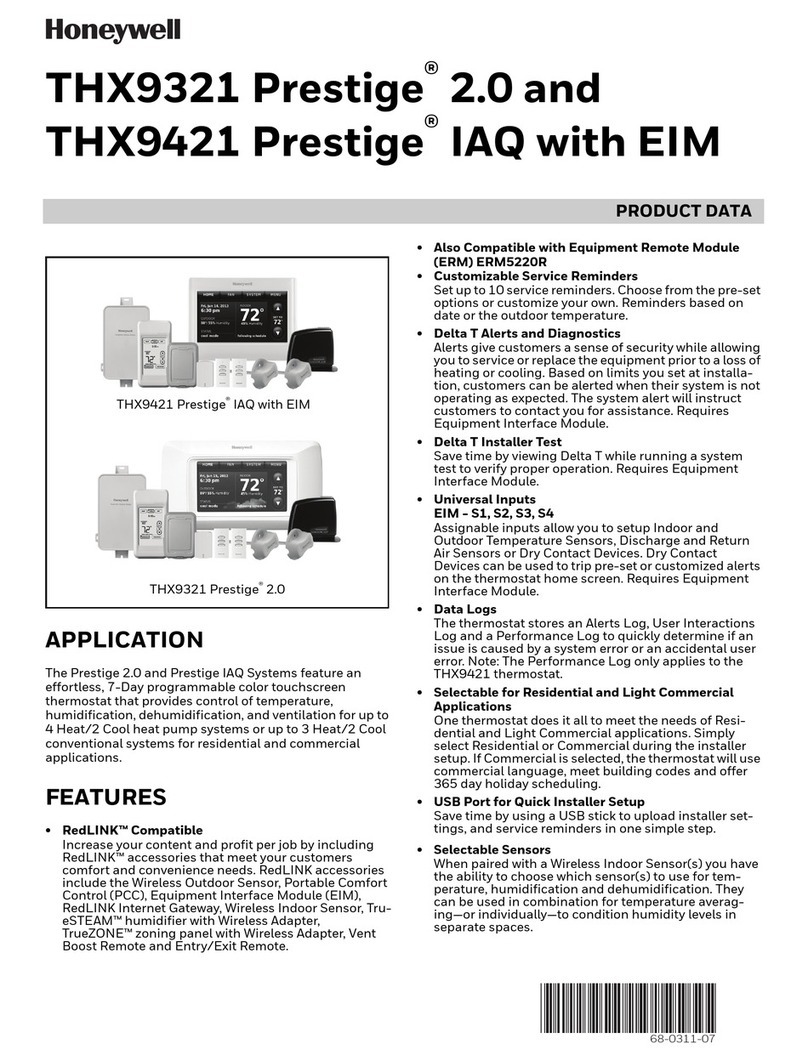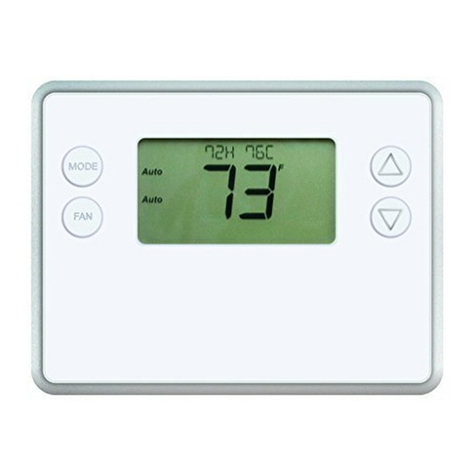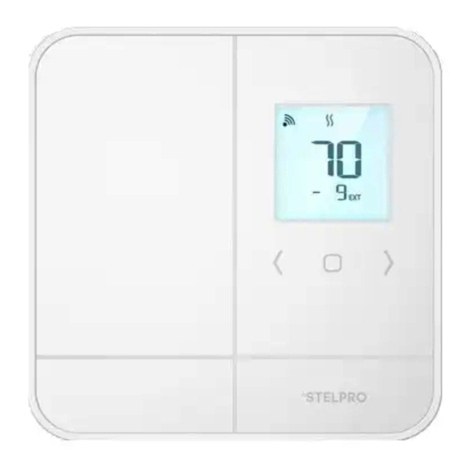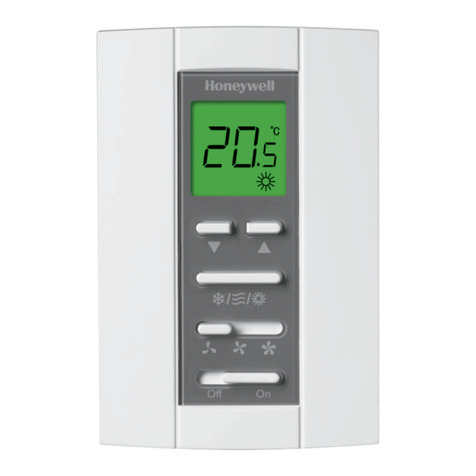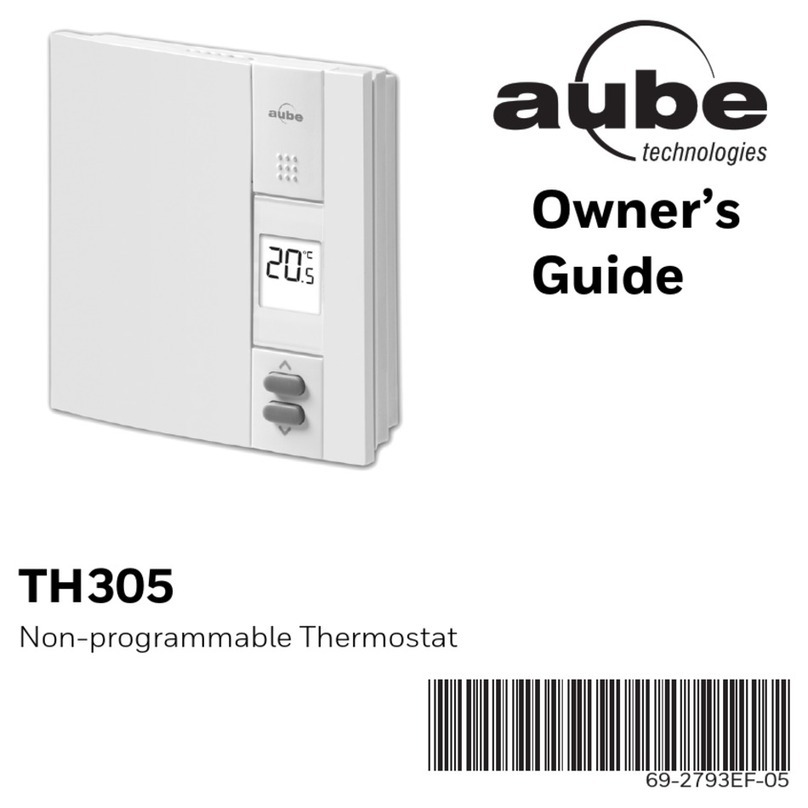
4
DEADBAND (Step 5) — The deadband is the difference in
temperature above the cooling set point or below the heating
set point that the thermostat will wait before turning on the first
stage of heating or cooling. For example, if the cooling set
point is 82 F (28 C) and the deadband is 2 degrees, the first
stage of cooling will not be energized until the temperature
reaches 84 F (30 C). The range of values is 1 to 6 degrees. The
default is 2 degrees.
SET POINT MINIMUM DIFFERENCE (Step 6) — The min-
imum difference between heating and cooling set points can be
user-configured. The range is from 0 to 6 degrees. The default
is 2 degrees. The minimum difference is enforced during Auto-
Changeover and Program On operation.
CYCLES PER HOUR LIMIT (Step 7) — The number of
times that heating or cooling can be energized per hour can be
configured. Set the variable to ‘‘d’’ for no limit. Set the variable
to ‘‘d1’’ to disable the 5-minute compressor lockout. The vari-
able can also be set from 2 to 6 cycles per hour. The default is
6 cycles per hour.
BACKLIGHT DISPLAY (Step 8) — The display backlight
can be set to ON (always on) or OFF (turn off 8 seconds after
usage). The default is ON.
SERVICE FILTER (Steps 9 and 10) — Step 9 allows the
user to reset the Service Filter counter to zero and remove the
‘‘SERVICE FILTER’’ icon (if displayed on the thermostat
screen). Press the FAN button while in Setup Step 9 and the
counter is reset to zero. Press the Mode button to adjust the
number of hours the blower will run before the ‘‘SERVICE
FILTER’’ icon is displayed. The range is 0 to 1950 hours. Set
the variable to 0 to disable this function. The default is
500 hours.
FAHRENHEIT/CELSIUS OPERATION (Step 11) — The
thermostat can be set to operate in Fahrenheit or Celsius de-
grees. Set the variable to ‘‘F’’ for Fahrenheit operation. Set the
variable to ‘‘C’’ for Celsius operation. The default is ‘‘F.’’
SECURITY LEVEL (Steps 12 to 14) — The Security Level
limits the actions that the user can perform at the thermostat.
There are 4 security levels. When the security level is set to
‘‘0,’’ no security will be in effect. When the security level is set
to ‘‘1,’’ the set point range is limited by the settings of Steps 13
and 14. When the security level is set to ‘‘2,’’ the set point
range is limited by the settings of Steps 13 and 14 and the Pro-
gram On mode is always in effect. When the security level is
set to ‘‘3,’’ the set point range is limited by the settings of
Steps 13 and 14, the Program On mode is always in effect, and
set point changes are prohibited. The default is 0.
Security Maximum Heat Set Point (Step 13) — If the Secu-
rity Level is not set to 0, the maximum heating set point will be
in effect. The user will not be allowed to set the heating set
point over the specified value. The range of values is 35 to 99 F
(1 to 37 C). The default is 80 F (27 C).
Security Minimum Cool Set Point (Step 14) — If the Securi-
ty Level is not set to 0, the minimum cooling set point will be
in effect. The user will not be allowed to set the cooling set
point below the specified value. The range of values is 35 to
99 F (1 to 37 C). The default is 65 F (18 C).
Program Thermostat Schedules —Before pro-
gramming the thermostat, plan the thermostat daily schedule.
The schedule is divided into 7 days (Monday through Sunday).
Each day has from 2 to 4 time periods (Occupied 1, Occupied
2, Occupied 3, Unoccupied) depending on the configuration of
the thermostat. Each occupied time period has a start time, stop
time, heating set point, and cooling set point. The unoccupied
time period has a heating set point and a cooling set point. The
unoccupied time period is active when ever an occupied time
period is not active. Fill in Table 3 as an aid to programming
the daily schedules.
NOTE: When the sensor detects light (the space is occupied),
the thermostat will enter Occupied 1 mode. If the room is dark,
the thermostat will follow its programmed schedule. The
Occupied 1 schedule should be turned OFF to keep the ther-
mostat from entering Occupied 1 while the room is unoccu-
pied. If the Occupied 1 schedule is turned ON, the thermostat
will enter Occupied 1 per the schedule regardless of light acti-
vation. The Occupied 1 set points are used as the heating and
cooling set points during light activation. The Unoccupied set
points should be used as non-work hour set points (before
8:00 AM and after 5:00 PM) when using light activation. For
times when the building is unoccupied during work hours
(Monday through Friday, 8:00 AM to 5:00 PM), the Occupied
2 schedule should be turned ON, and can be used for moderate
energy savings with set points of 80 F for cooling and 65 F for
heating.
PROGRAMMING MODE — To program the daily sched-
ules, perform the following procedure:
1. Enter programming mode by pressing the Program but-
ton. The Occupied 1 annunciator will appear on the ther-
mostat display. Use the UP ARROW and DOWN
ARROW buttons to set the maximum number of Occu-
pied periods for each day. The thermostat can be set to 1,
2, or 3. After the number of Occupied periods has been
selected, press the Mode button. See Fig. 6.
2. The cooling set point for Occupied 1 will be displayed.
Use the UP ARROW and DOWN ARROW buttons to
raise or lower the cooling set point until the desired tem-
perature is shown. The range of acceptable values is 35 to
99 F (1 to 37 C). Press the Mode button to continue. See
Fig. 6.
3. The heating set point for Occupied 1 will be displayed.
Use the UP ARROW and DOWN ARROW buttons to
raise or lower the heating set point until the desired tem-
perature is shown. The range of acceptable values is 35 to
99 F (1 to 37 C). Press the Mode button to continue. See
Fig. 6.
4. The cooling set point for Unoccupied will be displayed.
Use the UP ARROW and DOWN ARROW buttons to
raise or lower the cooling set point until the desired tem-
perature is shown. The range of acceptable values is 35 to
99 F (1 to 37 C) or ‘‘OF’’ (no unoccupied cooling). Press
the Mode button to continue.
Damage to compressor could result if 5-minute compressor
lockout is disabled or compressor is allowed unlimited
cycles. Do not set thermostat Advanced Setup Step 7 to
‘‘d’’ or ‘‘dl’’ unless specifically recommended for the
application.
Fig. 6 —Setting Occupied 1 Set Points
